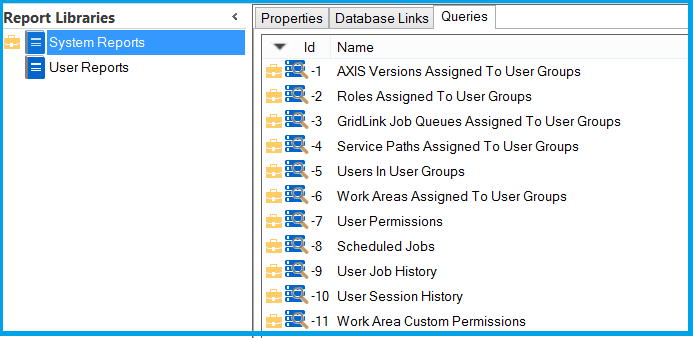AXIS EnterpriseLink for Managers
One place to find all components of your AXIS work
AXIS EnterpriseLink dashboard is a starting point for your work with datasets, backups, input and output files, import/export databases, and reports.
Single point access to all great tools AXIS EnterpriseLink offers
Application automatically customizes the layout presented in the dashboard to provide you with direct access to all AXIS versions and a variety of tools you need based on your role in the system.
Customizable set of functional areas
You can change the layout of your dashboard components by hiding sections you currently do not intend to use.
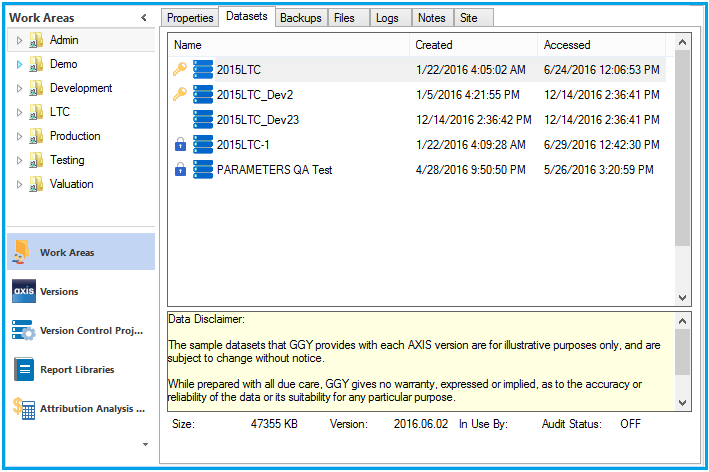
Scripted jobs to perform sequences of calculations or processes
AXIS users have already benefited from the ability to write their own AXIS Script (similar to Visual Basic for Applications - VBA) in a System Formula. EnterpriseLink provides a central place to create and execute scripts right fromthe user dashboard. These jobs are especially suited for production processes but can also be written by the user to perform various service tasks such as backing up datasets or converting datasets to newer versions of AXIS. We also introduced a new type of EnterpriseLink Job "EnterpriseLink Script". Unlike an "AXIS Script" type job that runs in AXIS, the EnterpriseLink Script job runs on EnterpriseLink allowing for native access to model dataset management functionality and Version Control capabilities, while providing functions to run AXIS jobs locally on the EnterpriseLink server or submit jobs to queues in AXIS GridLink on-premise or cloud based farms.
Job Version Control
Check your job into an EnterpriseLink Version Control Project and maintain the revision history for each job. Check out jobs for editing or get a copy of any version of the job for a testing or production run.
Automated runs without manual intervention
Use of Global Parameters provides the ability to run jobs without having to open datasets or job scripts, as well to perform fully automated runs via the built-in job scheduler. You can control which users can edit the job script, its parameters or job schedule.
Sample Jobs Library
Review Sample Jobs scripts to analyze the most often used functions/commands for maintenance and production runs. Copy the sample script into a new job and edit it to use with your datasets and/or enhance it with the functions specific for your needs.
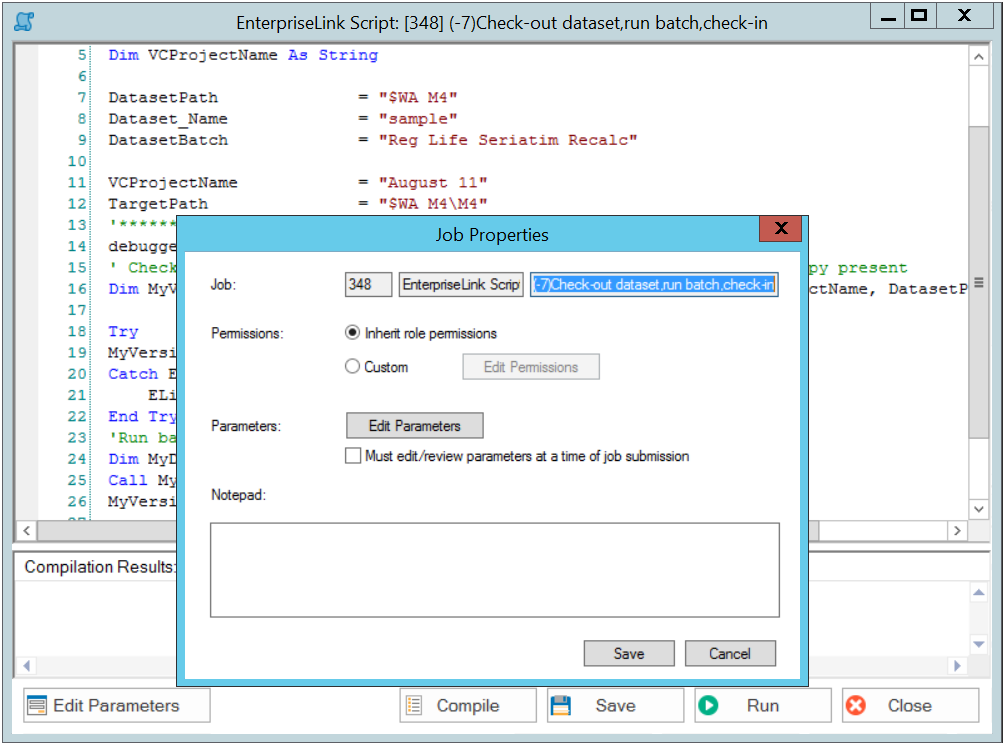
Integration with multiple AXIS GridLink farms
All versions of AXIS you are using are automatically configured with optimal parameters for access to one or multiple queues in your AXIS GridLink environment so you can immediately start submitting jobs when you need to run long batches on the powerful processing farm.
Submit jobs to a GridLink queue or run locally
AXIS EnterpriseLink controls user group access to AXIS GridLink farms. Once a user group is granted a right to use the GridLink queue(s), users can submit their batch to the GridLink farm queue (or run it on one of the EnterpriseLink servers).
Monitor jobs right from the EnterpriseLink dashboard
Monitor active jobs running on EnterpriseLink servers or in any of your GridLink job queues right from the dashboard and viewthe completed jobs list and their batch logs.
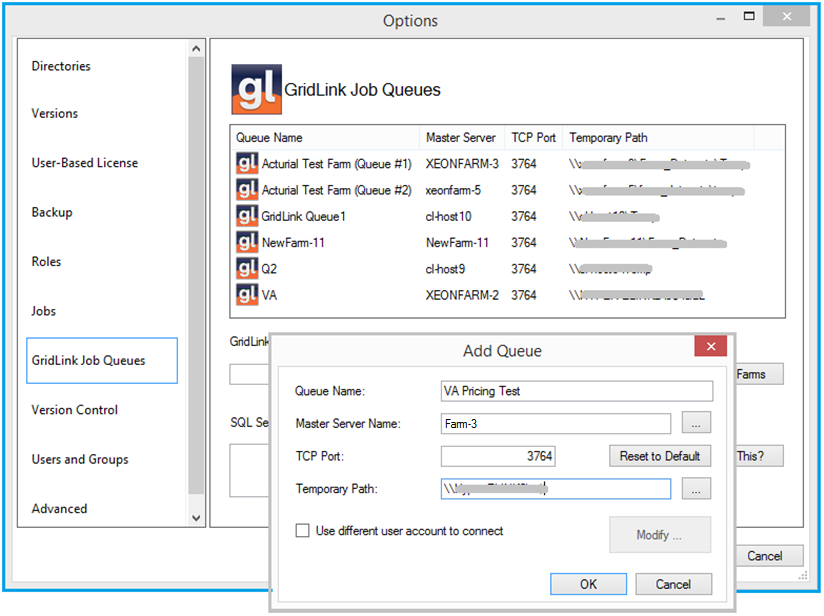
Centralized repository for scriptedproduction and maintenance jobs for automating AXIS runs
EnterpriseLink jobs module provides you with a simple interface to the scripted jobs repository. It enables you to edit, schedule and monitor automated runs.
Job Scheduling mechanism
EnterpriseLink introduces an easy-to-use interface for scheduling automated runs. You can set a date and time for job execution, establish the frequency to run with and select the AXIS version and the computer on which the job will run.
Job monitoring and history
You can monitor the status and progress of running jobs, including jobs running on GridLink and review the history of completed jobs and their batch logs right on the AXIS EnterpriseLink dashboard.
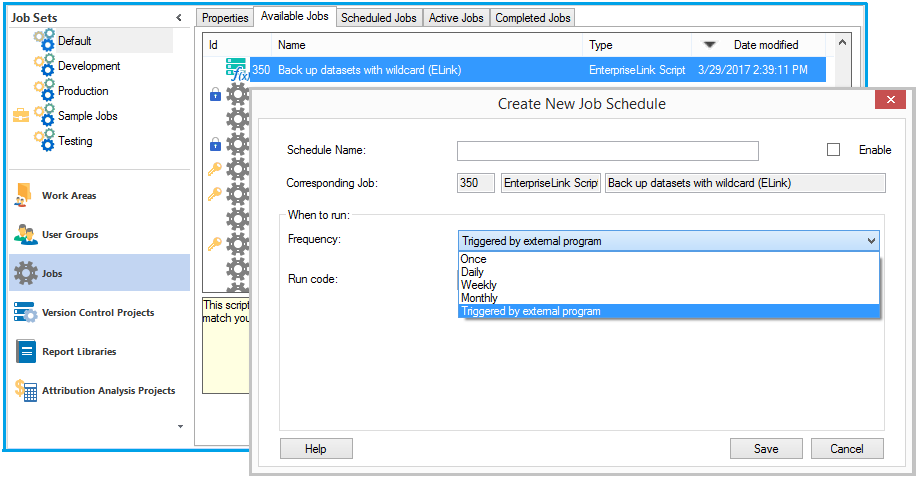
Connect to EnterpriseLink's own SQL Server database
Query various internal configuration tables, logs, user and object lists to produce numerous administrative reports.
